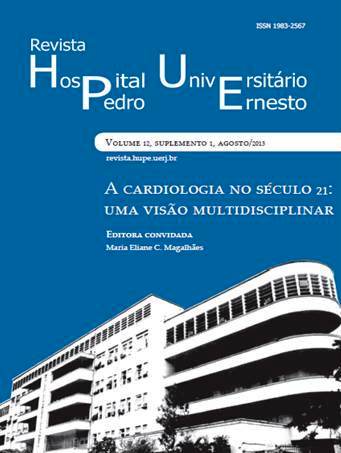Diabetes mellitus e coração: um continuum de risco Quais os alvos contemporâneos de tratamento e como alcançá-los?
DOI:
https://doi.org/10.12957/rhupe.2013.7080Resumo
Revista HUPE, Rio de Janeiro, 2013;12(Supl 1):25-35
doi: 10.12957/rhupe.2013.7080
As doenças cardiovasculares são a maior causa de morbidade e mortalidade em pacientes diabéticos tipos 1 e 2. Os mecanismos fisiopatológicos propostos para o aumento do risco cardiovascular em pacientes diabéticos baseiam-se em uma associação entre hiperglicemia e alterações metabólicas intracelulares que resultariam em estresse oxidativo, inflamação subclínica crônica e disfunção endotelial. Os fatores clínicos, como obesidade, dislipidemia e hipertensão arterial, que podem coexistir com o diabetes são de relevante importância e favorecem o aumento do risco cardiovascular inerente à doença. O propósito desse artigo é descrever a relação contínua entre o controle glicêmico, o estresse oxidativo, os sinais de resistência insulínica, a inflamação subclínica e o risco cardiovascular. Também será abordado o papel das principais comorbidades que contribuem para aumentar o risco cardiovascular desses pacientes. O estabelecimento de alvos clínicos e metabólicos adequados para o paciente diabético será discutido igualmente, dentro do contexto de intervenções terapêuticas medicamentosas e não medicamentosas.
Descritores: Diabetes mellitus; Doenças cardiovasculares; Hipertensão; Glicemia; Dislipidemias; Terapêutica.


